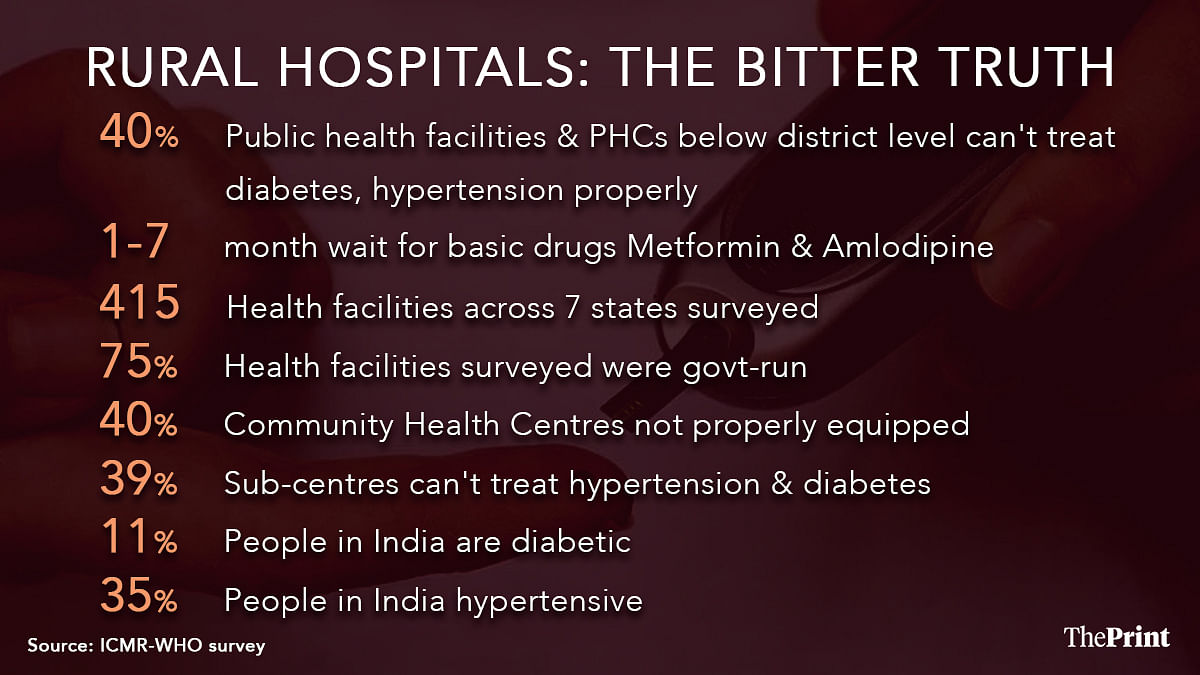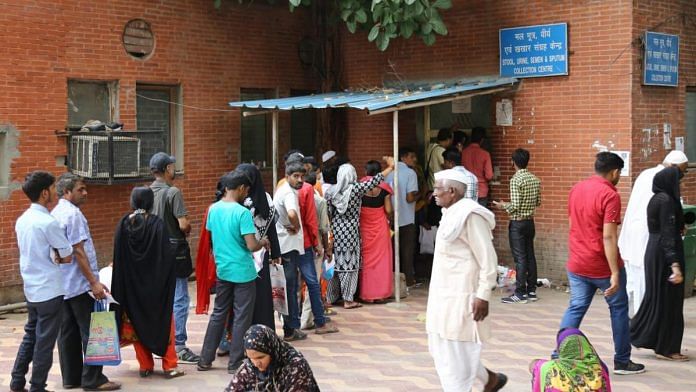New Delhi: Over 11 percent people in India are officially diabetic, and 35 percent hypertensive, yet over 40 percent of public health facilities and primary health centres below the district level are ill-equipped to treat them.
A survey carried out by the Indian Council of Medical Research (ICMR) and the World Health Organisation (WHO), which assessed 415 health facilities across 7 states (over 75 percent of which were government-run) found that over 40 percent Community Health Centres (CHCs) and 39 percent of the sub-centres were ill-prepared to provide hypertension and diabetes care, compared to primary health centres, district hospitals and medical colleges in urban areas.
Diabetes and hypertension are leading non-communicable diseases in India that have a significant impact on quality of life and life expectancy, and are considered among the biggest contributors to mortality in the country. Over 4 percent of deaths each year are directly linked to diabetes and 11 percent to hypertension.
The findings of the survey by ICMR-WHO, along with several leading research hospitals, were published in the latest issue of the Indian Journal of Medical Research last week.
The criteria used in the assessment included essential services like availability of basic medicines, healthcare personnel, diagnostic services and capacity to manage cases requiring hospital care.
Surprisingly, a large number of privately run primary health centres—43 percent—were also found low on readiness for managing diabetes and hypertension.
The survey was carried out in two parts, in 2021 and 2023, and showed that a third of the sub-centres lacked essential drugs like Metformin and Amlodipine, with shelves found empty for 1–8 months in several cases.

Also, the survey found a shortage of 82.2 percent physicians and 83.2 percent surgeons at CHC-level facilities, considered crucial for providing secondary-level healthcare services.
“Due to chronic stockouts in most places, patients are often forced to discontinue treatment or buy expensive medicines from private pharmacies,” said a scientist attached with ICMR-National Centre for Disease Informatics and Research who did not wish to be named.
“If India has to tackle the dual burden of hypertension and diabetes successfully, care of these conditions at every level will need to be strengthened,” the scientist added.
The largest epidemiological study of various non-communicable diseases, INDIAB by the ICMR and Madras Diabetes Research Organisation which was released in 2023 had shown that an estimated 315 million Indians, or 35.5 percent of the population, had hypertension.
This study had also shown that nearly 101 million people in the country had diabetes.
Also Read: Big pharma pivoting to more lucrative obesity segment, Indian drugmakers eye insulin market
Medicine stockout for 1-7 months in most public hospitals
The survey was carried out in seven states that include Haryana, Madhya Pradesh, Karnataka, Odisha, Rajasthan, Chhattisgarh and Meghalaya.
The service domain score for four domains—equipment, medicine, diagnostics capacity, staff, including the availability of guidelines, and overall readiness score, was calculated as per WHO standards.
The study considered a readiness score of 70 percent or more to classify a facility as prepared for providing hypertension and diabetes services. Most public health facilities—from sub-centres to sub-district hospitals—reported stockouts of essential medicines for managing diabetes and hypertension.
Out of 105 sub-centres assessed, nearly a third of the health facilities reported stockouts of tablet Metformin, the most frequently used drug for diabetes management and nearly a half reported stockouts of tablet amlodipine, used for hypertension.
The median duration of the stockouts for the medicines ranged from one to seven months and the sub-centres reported more stockouts of essential anti-diabetes and anti-hypertensive medicines compared to any other types of facilities.
These medicines were better available at government medical colleges compared to any other public health facilities, results found.
“Our findings suggest that among public health facilities, PHCs, district hospitals, and government medical colleges in India were better prepared to manage services for diabetes and hypertension,” the researchers said.
Across all facilities, the domain score for equipment was highest, and lowest for medicines. Also, the availability of all medicines was better at tertiary care facilities (public and private) compared to other levels of public health facilities.
(Edited by Viny Mishra)
Also Read: Experimental drug promising to bring down bad cholesterol by up to 69% completes early stage trial






